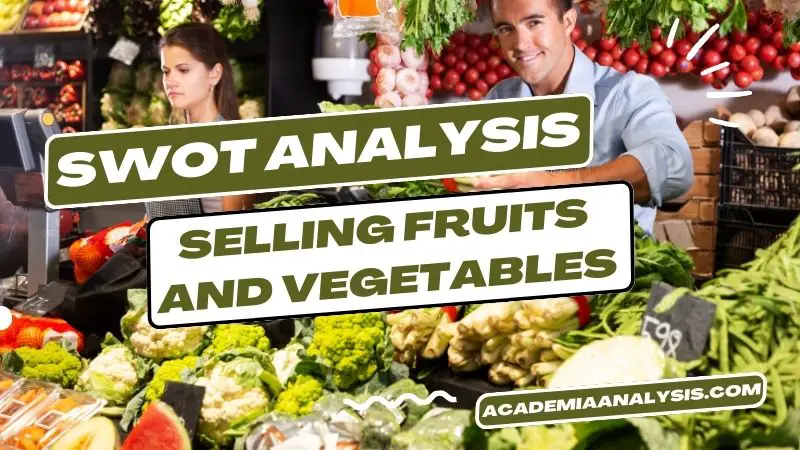Selling fruits and vegetables is an essential component of the agricultural industry and an important aspect of our daily lives. Fresh fruits and vegetables not only provide us with essential nutrients and vitamins but also add flavor and variety to our meals. The demand for locally grown, organic produce has increased in recent years, creating new opportunities for small farmers and local businesses to provide healthy and sustainable options for consumers.
Whether you are a farmer, a small business owner, or a consumer, understanding the importance and benefits of buying and selling fruits and vegetables is crucial for promoting healthy eating habits and supporting the agricultural community.
SWOT analysis is a widely used tool in business strategy development that helps companies identify their strengths, weaknesses, opportunities, and threats. In this article, we will apply the SWOT analysis framework to a fruit and vegetable business.
Strengths:
The first strength of a fruit and vegetable business is that it offers fresh and healthy food products that are essential for human well-being. Fruits and vegetables are in high demand, especially among health-conscious customers who seek to maintain a healthy lifestyle. The business can leverage this strength by offering a wide range of fresh fruits and vegetables and by emphasizing their health benefits.
Another strength of this business is that it can capitalize on the growing trend of sustainable and locally sourced food. Customers are increasingly aware of the environmental impact of their food choices and are willing to pay more for locally sourced products. The fruit and vegetable business can use this trend to its advantage by sourcing its products from local farms and promoting its commitment to sustainability.
Weaknesses:
One of the weaknesses of a fruit and vegetable business is the perishability of its products. Fruits and vegetables have a limited shelf life, and if they are not sold quickly, they may go bad and become unsellable. This puts pressure on the business to manage its inventory and ensure that it sells its products before they expire.
Another weakness of this business is that it is highly seasonal. The availability of certain fruits and vegetables is dependent on the time of the year, and this can affect the business’s revenue. For example, if the business relies heavily on selling apples in the fall, it may struggle to generate revenue during the spring and summer months.
Opportunities:
One opportunity for a fruit and vegetable business is to expand its product offerings. In addition to selling fresh fruits and vegetables, the business can consider offering value-added products such as pre-cut fruits and vegetables, salads, and fruit smoothies. These products can attract new customers and increase the business’s revenue.
Another opportunity for this business is to leverage technology to improve its operations. For example, the business can use software to track its inventory and sales data, which can help it optimize its pricing and inventory management. Additionally, the business can use social media and online platforms to promote its products and reach a wider audience.
Threats:
One of the threats facing a fruit and vegetable business is competition from other food retailers. The grocery industry is highly competitive, and the business may face stiff competition from supermarkets, farmers’ markets, and other food retailers. The business needs to differentiate itself from its competitors by offering unique products, superior customer service, and competitive pricing.
Another threat to this business is the possibility of supply chain disruptions. The fruit and vegetable business relies on a complex supply chain that includes farmers, distributors, and transporters. Any disruption in this chain can affect the business’s ability to obtain fresh products, which can have a negative impact on its revenue.
Conclusion
SWOT analysis of a fruit and vegetable business reveals its strengths, weaknesses, opportunities, and threats. The business can leverage its strengths, such as offering fresh and healthy food products and capitalizing on the trend of sustainable and locally sourced food.
It can address its weaknesses, such as managing its perishable inventory and dealing with seasonality, by implementing effective inventory management strategies. It can seize opportunities, such as expanding its product offerings and leveraging technology to improve its operations. Finally, it can mitigate threats, such as competition from other food retailers and supply chain disruptions, by differentiating itself from its competitors and building resilience in its supply chain.






